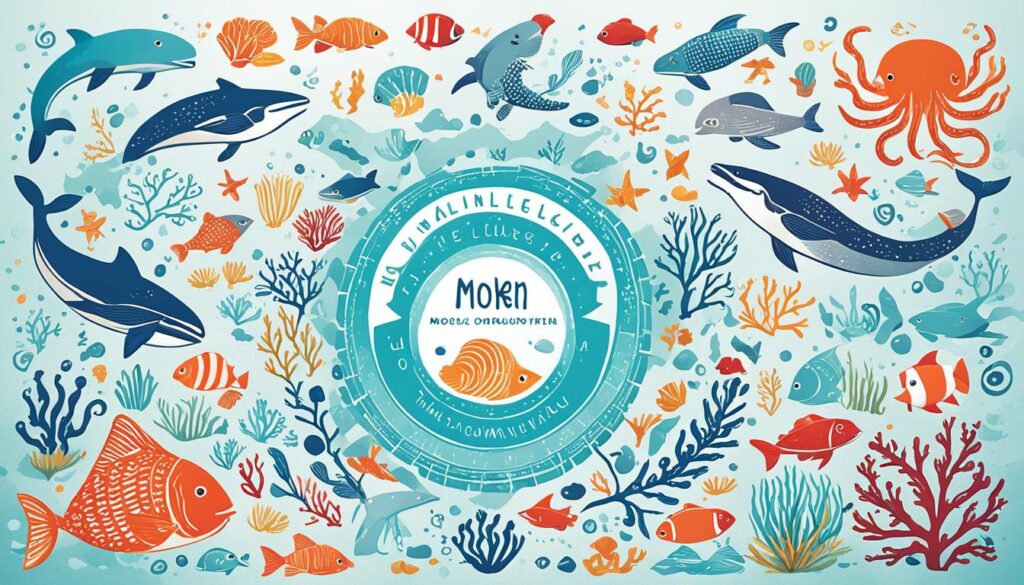Did you know that the Moken language, spoken by the Moken people in southern Myanmar and southern Thailand, is estimated to have only around 7,000 speakers?
The Moken language, an Austronesian language, is at risk of disappearing, highlighting the importance of preserving indigenous languages like Moken. In this article, we will explore the unique culture of the Moken people, the linguistic features of the Moken language, the threats they face, and the significance of preserving their language and culture.
The Unique Culture of the Moken People
The Moken people, also known as “sea gypsies,” have a unique culture that revolves around their deep connection with the sea. They live on houseboats and depend on the sea for their livelihood and sustenance. Swimming is an essential skill for them, and they spend equal time underwater as they do on the surface. Their close relationship with the sea has given them the ability to predict tsunamis and seek higher ground. Despite their nomadic lifestyle, the Moken have a rich oral tradition of storytelling and cultural practices that have been passed down through generations.
| Traditional Lifestyle | Sea Nomads | Cultural Preservation |
|---|---|---|
| The Moken people lead a traditional lifestyle that is closely intertwined with the sea. They rely on fishing, collecting seafood, and foraging for their sustenance. | As sea nomads, the Moken people have honed their skills in navigating the waters and reading the signs of nature. They possess unique knowledge of the sea and its creatures. | Preserving the cultural heritage of the Moken people is essential for maintaining their identity and ensuring the continued existence of their ancient customs and traditions. |
| The Moken build their houses on stilts and live in close-knit communities, supporting each other both socially and economically. | The Moken’s lifestyle allows them to move freely along the coast, adapting to changing weather conditions and following the resources of the sea. | Efforts are being made to document and revitalize the Moken culture to safeguard their unique practices from being lost to modernization. |
| They possess extensive knowledge of the marine environment, including navigation techniques, fishing methods, and the medicinal properties of marine plants. | The Moken children start developing their swimming and diving skills from a very young age, becoming proficient in the water. | The preservation of the Moken culture contributes to the diversity of Thailand’s cultural landscape and promotes intercultural understanding. |
The Linguistic Features of Moken Language
The Moken language, spoken by the Moken people in southern Myanmar and southern Thailand, possesses distinctive linguistic characteristics that reflect their unique culture and way of life. The structure of the Moken language is shaped by their close connection to nature and their dependence on the sea for survival.
One intriguing aspect of the Moken language is the absence of specific words for “worry” or “want.” This linguistic peculiarity is a reflection of their cultural lifestyle, which centers around day-to-day survival and their ability to adapt to the resources provided by the sea. The Moken people do not emphasize notions of material desires or anxieties, and their vocabulary mirrors this focus on immediate needs and contentment.
Furthermore, the Moken language exhibits a unique perception of time, distinct from Western languages. The Moken people do not rely on expressions like “when” or specific temporal markers. Their days revolve around the tides, the rhythm of the sun, and the activities associated with a life at sea. Time is experienced through a cyclical and fluid lens rather than being segmented into fixed intervals.
“Our language aligns with the ebb and flow of the ocean, the rise and fall of the sun. We don’t have a word for hurry or urgency because time, for us, is not a linear progression. It is interconnected with the natural rhythms of our environment.”
This unique perception of time is deeply intertwined with the Moken people’s close relationship with nature, as they rely on the natural world’s cues for their daily activities and navigation at sea.
The Moken language structure, the absence of words for worry and want, and their unique perception of time highlight the profound connection between language and culture. The Moken people’s linguistic features offer a glimpse into their distinct way of perceiving the world and invite us to appreciate the diversity and richness of human language and expression.

Threats to the Moken Language and Culture
The Moken language and culture face significant challenges that endanger their survival. Over the past decade, the population of the Moken people has been decreasing due to various factors, including cultural assimilation through tourism and poverty. Many Moken individuals have migrated to mainland areas where Moken is not the primary language, leading to a decline in its usage.
One of the critical threats to the Moken language and culture is high illiteracy rates among the community. Illiteracy poses a significant obstacle to the transmission of cultural traditions and the preservation of the language for future generations.
Exposure to other cultures and languages, combined with poverty, has resulted in the erosion of the Moken language and its cultural practices. As the Moken people adapt to new socio-economic challenges, their language and cultural heritage face the risk of being marginalized and lost.
The Moken language and culture are treasure troves of knowledge and wisdom passed down through generations. It is vital that we recognize the value and significance of their linguistic and cultural diversity and take action to protect and preserve them.
Efforts must be made to address the threats faced by the Moken language and culture. This involves implementing initiatives to promote language preservation, supporting literacy programs within the community, and empowering the Moken people to maintain their cultural identity despite external pressures.
| Threats to the Moken Language and Culture | Solutions |
|---|---|
| Cultural assimilation | Promoting cultural pride and awareness, creating opportunities for cultural exchange within the community |
| Illiteracy | Implementing literacy programs, providing access to education and learning resources |
| Poverty | Supporting economic development initiatives, empowering the Moken people to improve their socio-economic conditions |
Preserving the Moken language and culture is not just a responsibility towards the Moken people but also a commitment to safeguarding the world’s linguistic and cultural diversity. By valuing and protecting the Moken language, we contribute to the collective richness of humanity’s heritage.
Conclusion
The Moken language and culture are invaluable treasures that contribute to the linguistic and cultural diversity of Thailand. The preservation and revitalization of the Moken language are essential for safeguarding the cultural heritage of the Moken people and ensuring the continuation of Southeast Asia’s linguistic diversity.
Language preservation initiatives play a crucial role in protecting the unique identity and traditions of the Moken people. By supporting these efforts, we can empower the Moken community to retain their language, which is deeply intertwined with their cultural practices and way of life.
Preserving the Moken language not only benefits the Moken community but also enriches the broader cultural tapestry of Thailand. It celebrates the indigenous languages that have shaped the country’s history and promotes cultural diversity, ensuring that future generations can appreciate and learn from the Moken’s unique linguistic and cultural heritage.
